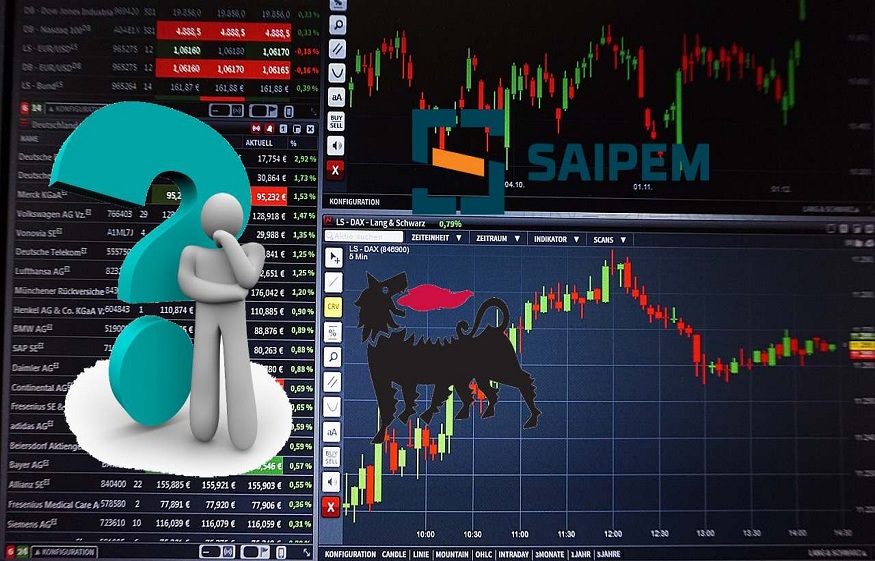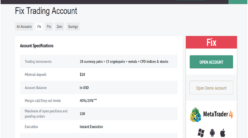
Traders constantly seek opportunities to exploit price discrepancies while managing risk efficiently. One area that has drawn growing attention among sophisticated investors is CFD (Contract for Difference) arbitrage, particularly involving Italian energy majors such as ENI and Saipem.
These companies operate in sectors with inherently complex interdependencies, where equities, commodities, and broader market dynamics intersect. Understanding these correlations and effectively navigating them can provide traders with unique arbitrage opportunities that are both rewarding and strategically sound.
Key Correlations in the Italian Energy Sector
For traders seeking to exploit CFD arbitrage in Italian energy markets, understanding the key correlations is crucial. ENI, Italy’s largest integrated energy company, operates in both upstream exploration and downstream refining and distribution. Its stock price is particularly sensitive to crude oil price movements, global energy demand, and regional production adjustments. Saipem, while also part of the energy ecosystem, is more heavily exposed to engineering, procurement, and construction (EPC) contracts in the oil and gas sector, making its share price partially influenced by project pipelines, commodity prices, and broader industry sentiment.
The interplay between ENI and Saipem offers a fertile ground for arbitrage. For instance, when crude oil futures experience sudden volatility, ENI shares may react sharply due to direct exposure to upstream operations. Saipem shares, by contrast, may respond more moderately or with a delayed effect, depending on project timelines and contractual obligations. This temporal and magnitude divergence can create short-lived but actionable price discrepancies for skilled CFD traders.
Techniques for Effective Arbitrage
Several techniques are particularly relevant when implementing CFD arbitrage on ENI and Saipem:
- Cross-Asset Monitoring: Traders must track not only equity prices but also correlated commodity markets. Crude oil, natural gas, and refined product futures often provide leading signals for equity movements. Tools that integrate real-time commodity pricing with CFD platforms allow traders to identify arbitrage windows before they narrow.
- Statistical and Quantitative Models: Advanced arbitrage strategies often rely on statistical models that measure historical correlations, mean-reversion tendencies, and volatility spreads. By quantifying the expected relationship between ENI and Saipem, traders can detect anomalies that indicate potential arbitrage opportunities.
- Hedging and Risk Management: Effective arbitrage is not risk-free. Market events, execution delays, or unexpected news can erode theoretical gains. Using CFDs, traders can construct positions that hedge unwanted exposures. For example, a simultaneous long position on ENI and short position on Saipem, adjusted for correlation ratios, can isolate the relative price movement while minimizing directional risk.
- High-Frequency Execution: Timing is critical in arbitrage. Price discrepancies often last only minutes or even seconds, especially in liquid markets. Advanced traders may leverage algorithmic execution or automated alerts to ensure trades are executed promptly, maximizing potential returns.
Monitoring Macro and Micro Drivers
Italian energy stocks are influenced by both macroeconomic and microeconomic factors. Globally, oil supply dynamics, geopolitical tensions in energy-producing regions, and European energy policy all play a role. Domestically, regulatory frameworks, project approvals, and financial disclosures from ENI and Saipem can trigger significant market reactions.
Traders need to maintain a dual perspective: watching macro drivers that can broadly shift energy markets, while also tracking company-specific developments that may temporarily decouple ENI and Saipem price movements. For instance, a sudden delay in a Saipem offshore project may cause its shares to underperform ENI despite rising crude prices, creating an arbitrage opportunity if CFD positions are aligned correctly.
Leveraging CFDs for Arbitrage
CFDs are particularly well-suited for these strategies due to their flexibility and leverage. Traders can take long and short positions simultaneously, adjust position sizes dynamically, and respond quickly to market changes without the need to physically own the underlying asset. Moreover, CFDs allow traders to access both equity and commodity instruments on integrated platforms, facilitating cross-market arbitrage that would be cumbersome with traditional instruments.
For traders looking to deepen their understanding of these methods, it is helpful to see more on how CFDs can be utilized in complex trading strategies. Comprehensive knowledge of CFD mechanics, margin requirements, and risk exposure is critical to implement arbitrage strategies effectively and sustainably.
Challenges and Considerations
While CFD arbitrage offers compelling opportunities, it is not without challenges. Market liquidity, transaction costs, and slippage can reduce theoretical profits. Regulatory constraints and market rules in Italy and across Europe may also impact execution. Furthermore, the speed and accuracy of real-time data, as well as the reliability of trading platforms, are crucial to success. Traders must maintain robust risk management protocols, including position limits, stop-loss mechanisms, and continuous performance monitoring.
Another consideration is the dynamic nature of correlations. Historical relationships between ENI, Saipem, and relevant commodities may break down under extreme market conditions. Arbitrage strategies must be adaptable, with contingency plans to respond to sudden volatility or unexpected news events.
Conclusion
Advanced CFD arbitrage in Italian energy stocks requires a deep understanding of correlations, market mechanics, and company-specific factors. By carefully monitoring ENI and Saipem alongside their commodity exposures, employing quantitative models, and leveraging the flexibility of CFDs, traders can exploit fleeting price discrepancies with precision. While the strategy demands careful risk management and continuous analysis, the potential rewards for skilled traders are substantial.
Navigating these markets successfully entails more than just spotting mispricings; it involves integrating macroeconomic insight, micro-level company analysis, and advanced execution capabilities. For traders committed to mastering these techniques, the combination of disciplined strategy and robust tools provides a pathway to capturing arbitrage opportunities that others may overlook.





